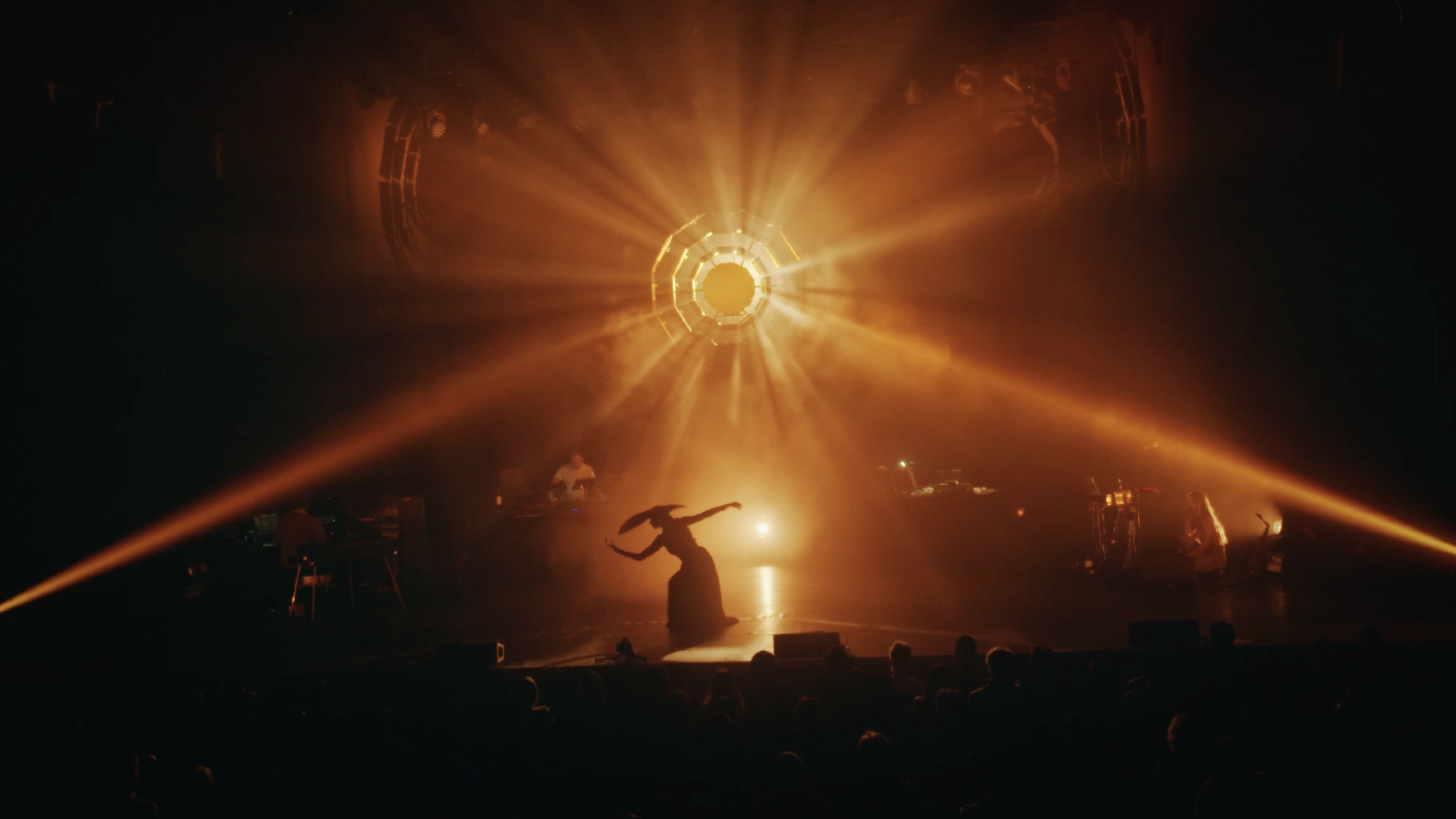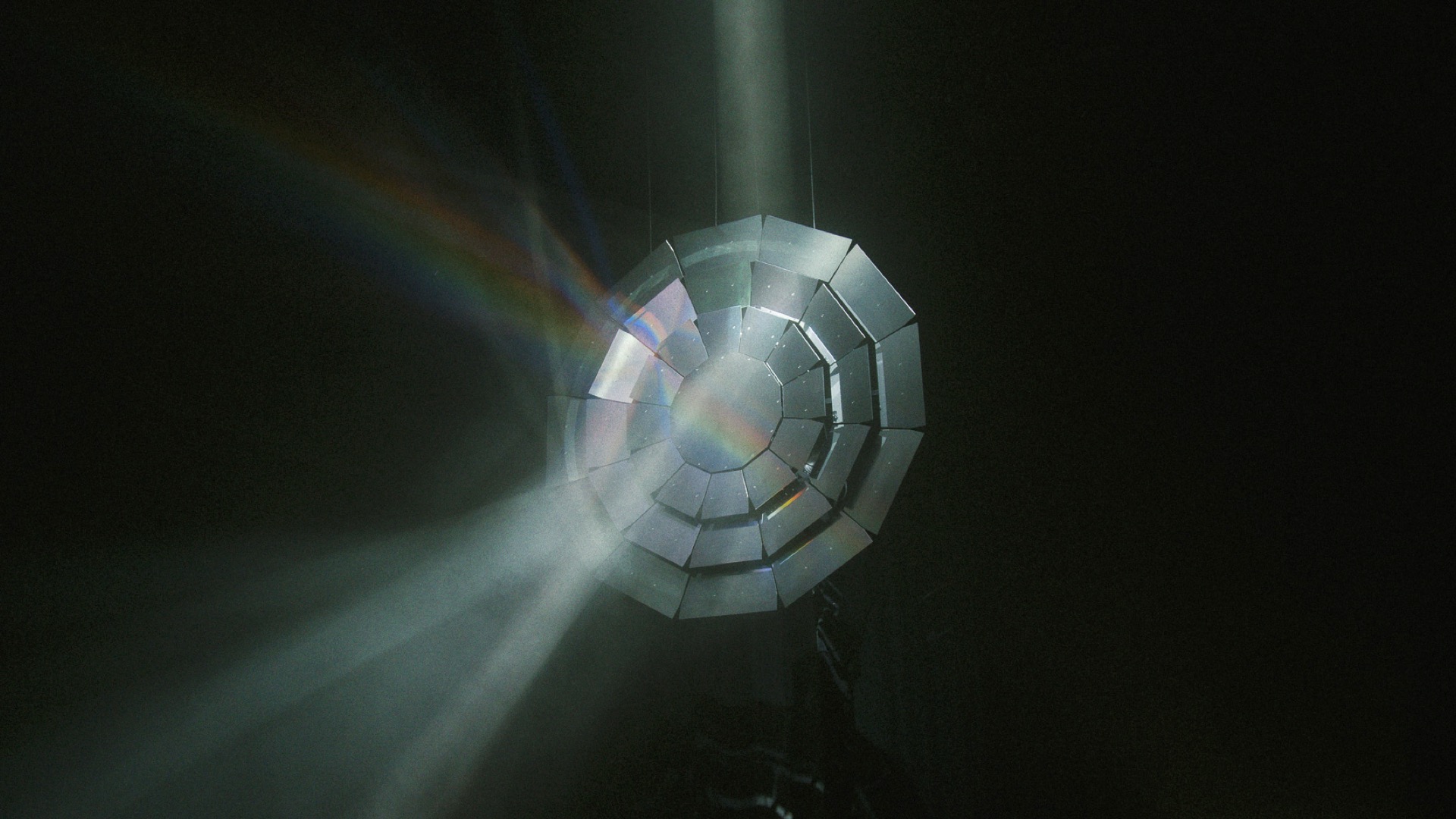Heleen, could tell me more about the installation, Heliotrope and how it will be transformed within the context of Conflux?
Heleen Blanken: Heliotrope is an installation I developed for Draaimolen, together with Daniel de Bruin. It was originally an art installation in a chapel that we built, and now it’s transforming into a standalone piece. The installation in itself keeps its original form, but of course, we had to make some adaptations.
While the installation was exhibited at Garage Rotterdam, I worked together with Michiel Kunst, who suggested making it interactive with a dancer. Within a few hours, he sorted it out, creating this invisible kinetic field, allowing a dancer to interact with the different motors and rings of the installation.
For the show in Brutus, which is indoors, we have to be more delicate with movement and light because everything reflects differently indoors. When it’s outdoors, it scatters away, but indoors, you feel it much more. We noticed this, for instance, in Garage Rotterdam.
Therefore, the performance will have two different parts: a one-on-one interaction between the dancer – who is going to be Claudio Murabito, Rotterdam-based contemporary dancer – and the machine. The second piece will be a live-controlled performance by me and Aho Ssan, supported by Machiel Kunst.
How is the collaboration going so far? And more specifically how are you blending your artistic practices into the performance?
Aho Ssan: It’s still a work in progress; nothing is fully finalized yet. But that’s part of the beauty of it. I’ve started becoming more and more familiar with Heleen’s work. We’ve had one significant in-depth meeting to discuss the direction we want to take.
I’ve created a piece based on our conversation. It’s about 15 minutes long, quite abstract, and explores intensity. I wanted to delve into the physicality of sound and time, especially since the venue is quite spacious.
In your work you often incorporate philosophical concepts, How do these concepts influence your body of work? And how are you engaging both with the theme of the festival, “Symbiotic Realities”?
Aho Ssan: The piece I was working on when I received the festival information is called “Between the Two.” I presented it in a different format in Poland in a piece called “The Black Room,” where it was experienced in total darkness.
When they proposed this project to me, I was excited to revisit this piece because it aligns with the festival’s theme. The piece was originally inspired by my first album, “Simulacrum,” which was influenced by Jean Baudrillard’s work “Simulacres et Simulation.”
At that time, I was interested in exploring philosophical questions about truth and the replica of reality, especially through my own life experiences. When I started making “Simulacrum,” I was trying to reconnect with my roots. I traveled to Ghana, where I’m originally from, and tried to engage with traditional music and instruments through modern techniques. It was an attempt to simulate what I imagined my ancestors might have done with their music.
“Between the Two” is an extension of this exploration. It’s also based on a personal experience, as I lost one of my best friends. The piece is my way of exploring grief and the reality of loss.


